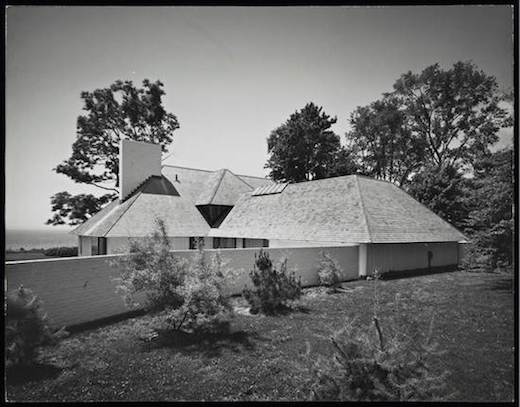Marisa Angell Brown: Time to get beyond 'wannabe' architecture
Vose House, in Barrington, R.I., by Huygens and Tappe. Photo courtesy of Tappe Architects, Boston.
Architecture is important in Providence. Unlike in many other places, people here have strong views about whether they prefer modernist or traditional buildings. As in discussions about local politics, differences in opinion can become toxic when opponents from either “side” meet. This happens every time a new building goes into design, and a familiar cast of characters calls either for cutting-edge contemporary architecture (novel shapes and modern materials) or for a building that respects its “context,” which usually means a red brick building with traditional ornamentation. This conversation has been on acrimonious replay for some time.
The position of both sides has merit. I say this as an architectural historian whose love is modernist architecture – even some of the hard-to-love Brutalist buildings of the 1960s, with their hulking, rough concrete façades and bizarre interiors – but who chooses to live in a circa-1800 home off of Benefit Street which I love madly. I love this city; in particular, I love walking in this city as its architecture is endlessly interesting, rich and beautiful. We all, even we modernists, are grateful to the preservation movement, which started here in the 1950s, when Antoinette Downing protested the planned destruction of several historic houses on Benefit Street to make way for Brown and Rhode Island School of Design dorms.
But I can’t support the architecture track we are on, of building “wannabe” historic buildings (red brick, usually with some stone detailing taken from classical architecture) because they are noncontroversial – an especially alluring virtue when you are a developer trying to get approval as quickly as possible – or “compromise” buildings, a mix of modernist and traditional design principles that got just enough votes from each camp to secure a green light.
Cutting-edge modernism? The few times that any of the leading design innovators have built here, the results have been tepid – we seem to get the worst of these firms’ work, making it harder for those who value traditional architecture to see the value of thoughtful modernist architecture. What to do?
In the course of recent research, I came across about a dozen homes that were built in Rhode Island between the late 1940s and mid-1980s that are relevant to this conundrum. Some of them were designed by famous or semi-famous architects (Robert Venturi, Charles Moore, The Architects Collaborative, Hugh Newell Jacobson) and some by complete unknowns (Samuel Glaser, Huygens and Tappé, Christopher H.L. Owen). They were built in Providence, Barrington, Bristol, North Kingstown and on Block Island and run the gamut from city homes to country barns to beach shacks.
They all share a common spirit, a common “both/and” approach: they are constructed of historically regional materials of brick, wood or shingle siding (so they are traditional), but at the same time they are undeniably modern, from the large picture windows that became possible with technological advances in the early 20th Century, to the unexpected placement of small off-center windows that give many of these homes a humorous charm, to their multiple and oddly shaped roof lines or their curious levels and half-levels of interior space.
In materials and massing, they fit the “context” of the whole history of architecture in Providence, in Rhode Island and in New England, but in fundamental ways they are of our times (in this, they recall the shingle style homes of the 1880s and 1890s that were built in Rhode Island and throughout New England, whose traditional façades belied asymmetrical, unexpected details and odd bulges of interior space).
Did the clients insist that the buildings bear some relationship to our existing built landscape, or did the architects suggest this direction? Whatever the reason, this little collection of buildings may point the way to a third track in our ongoing debate about architecture here. Maybe we shouldn’t look to architecture firms like Diller Scofidio + Renfro (architects of the Granoff Center, at Brown), Renzo Piano, Frank Gehry or others who think in glass and steel, whether in swoopy forms or crisp geometries or to the second-rate purveyors of “wannabe” traditional – but to such talented and innovative firms as Todd Williams Billie Tsien, Kieran Timberlake and Studio Gang that are using traditional materials in modern ways.
It may be that we do have a history of strong but sensitive modern architecture here, and that unwittingly we have already proceeded a few steps down this track with these projects from the past. I could imagine a scenario in which, guided by the principles of this “both/and” approach, we might begin to build buildings that are worthy of the particular and unique beauty of Providence and that add to its energy and spirit. We can protect our architectural heritage and embrace a certain type of sensitive modernist architecture at the same time; in doing so, we might even blaze a trail for other cities that struggle with this issue.
Marisa Angell Brown, Ph.D., is an architectural historian and critic, and the founder and president of genie loci, a cultural resources research and project design firm based in Providence.

